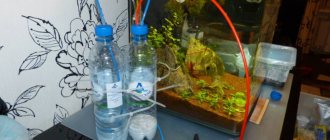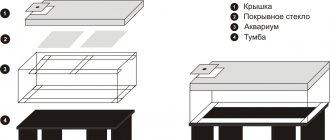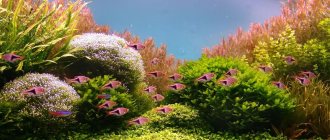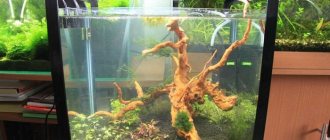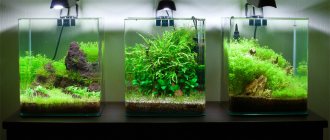Features of invertebrates:
Jellyfish Jellyfish
are perhaps the most amazing sea creatures and undoubtedly one of the most beautiful. They appeared on our planet long before the appearance of dinosaurs. And we can say with confidence that they are beautiful and amazing just as much as they are dangerous and merciless.
More information about BEFREE can be found here ⇒ https://t.me/befreesaratov
Jellyfish do not have a brain, so there are enough reasons to sting a creature that they dislike in some way. Penetrants are sharp hairs that dig into the victim’s body and release poison, while glutinites and volventes (another types of hairs) prevent the victim from escaping. But that's not what this is about.
Their structure resembles an umbrella or a bell. Due to the complete absence of a skeleton, they are vulnerable to injury, especially under the dome.
Fortunately for them, nature has given them the gift of premonition, which allows jellyfish to avoid danger by going to cover in advance.
Feeding
Jellyfish need to be fed well and plentifully; lack of food leads to exhaustion and illness of rare aquatic inhabitants. Animals need good nutrition. Pet stores sell specialized foods that contain vitamins and nutrients. It is recommended to feed store-bought food along with live food. You can feed marine inhabitants with brine shrimp and finely chopped minced fish.
Jellyfish should be fed daily. You can't overfeed them. You can determine satiety by looking at the body: the filling of the stomach is visible through the transparent skin.
Keeping jellyfish in an aquarium:
Aquarium for jellyfish
The peculiarity of the content is that jellyfish can only exist in special conditions. Krisel is a special type of aquarium designed to support special species of delicate planktonic organisms.
The design resembles a closed cylinder in which layers of water move in a circle and do not mix with each other. This habitat is close to natural.
It is important to ensure that in an aquarium with jellyfish there are no small bubbles that can pierce the body of the invertebrate, thereby killing it.
There are 3 types of jellyfish used for keeping at home:
- Philoriza
- Aruelia
- sea nettle
Often, amateurs breed aurelias because of their unpretentiousness and beautiful shape. They are also the most harmless and do not pose a danger to the owner and other inhabitants of the aquarium, in the form of a burn, and their poison is not fatal to humans.
Also more rarely used are the Pacific jellyfish, golden jellyfish, Cassiopeia jellyfish, etc.
Jellyfish
Transportation of jellyfish is a separate topic that deserves attention. Most often, transportation is carried out in tanks with smoothed corners or in plastic bags.
The water should be at the natural temperature for the jellyfish. That is, if the animal was caught in warm seas, for example in the Mediterranean, then the water in the aquarium should be within 10-16 degrees.
If in cold seas, for example in the White Sea, then the water should be appropriately cold. Jellyfish should not be exposed to air even when moving from aquarium to aquarium.
It is worth noting that the most common cause of death of aquarium jellyfish is careless transportation, as a result of which the animal is injured and dies.
It is enough to keep the water in the aquarium clean by usually changing it, but installing filters is also recommended. You can use “natural bio-purification”, using a variety of microorganisms that filter the liquid and keep it clean.
But it is worth remembering that there are types of “biofilters” that release air bubbles into the water, which are strictly contraindicated for jellyfish.
If mature jellyfish are in the aquarium for a definitely long time. It is quite possible to expect offspring from them in the form of polyps on the walls of the aquarium and filter grids.
If polyps appear, they should be transplanted into a separate container with water. Not necessarily a carousel structure, but after the appearance of small jellyfish, return them to large jellyfish.
Nutrition
In order for unusual pets to feel good and delight the owner with their dancing and presence for a long time, it is necessary to take care of proper nutrition. The phenotype is fed with live food, and special vitamin complexes are also added. In natural wild conditions, these graceful creatures feed on plankton, which at home is replaced with chopped seafood. Shrimp can only be given to certain species, but pets should not be spoiled with fish.
Keeping jellyfish in an aquarium became possible relatively recently, and those who have acquired exotic pets note that swimming pets in an aquarium is a fantastic sight. Despite some difficulties, thanks to special tanks, keeping jellyfish at home has become accessible to many aquarists.
Mnemiopsis
This is not a native inhabitant of the Black Sea, but a guest from the eastern shores of the West Indies and the USA. The invasion of this species into the waters of the Black Sea has caused damage to fisheries. Work is currently underway to reduce the number of this species.
Mnemiopsis is a jellyfish that does not have stingers or tentacles. Its body reaches ten centimeters in length and six centimeters in width. This organism has the ability to glow (bioluminescence). What does the Mnemiopsis jellyfish eat in the Black Sea? This is mainly the caviar of small fish (sprat, for example), and zooplankton. Surprisingly, this organism continues to consume food even when the stomach is completely full. And when the stomach is full, excess food is thrown out in the form of a mucus ball. Another interesting fact is that with a lack of food, Mnemiopsis can live for three weeks.
About jellyfish
The transparent jellyfish that we see in the sea are just part of the life cycle of coelenterates. They are characterized by two stages: polypoid and medusoid. Adult, sexually mature jellyfish reproduce sexually. The result is larvae - planulae, floating in the water column for several days.
The planules attach to the substrate and transform into a polyp. It is noteworthy that even in the stationary stage, these animals reproduce by budding. Asexual reproduction can continue indefinitely, and jellyfish can only appear in favorable conditions.
As the temperature rises, as a result of the process of strobilation, small young disc jellyfish are formed, which are called ethers. Over time they become adults.
The body of a jellyfish is transparent, resembles jelly and consists of 99% water. In this case, the skeleton is absent, as are the protective coverings of the body, so they are very vulnerable. Their delicate body is easy to destroy. Any dense object, even a small air bubble, can cause a wound. Strong currents and rough waters are also dangerous. This is why jellyfish swim to the depths when a storm approaches.
Lighting
Some species of jellyfish (Mastigias and Cassiopeia) contain symbiotic algae in their tissues. In this case, they will need lighting so that the plants can receive the light they need for life. Other types of jellyfish do not require lighting. Animals can move towards the light because they mistake it for a source of food - an accumulation of plankton.
It is better to keep jellyfish in low light, this will prevent the appearance of a green coating on the walls. An aquarium with live jellyfish looks great with multi-colored lighting.
Filtration
Filtration is also not a necessary element in a jellyfish trap. To keep the water clean, regular changes will be sufficient. However, it is possible to install a simple life support system. The main thing is to protect jellyfish from being sucked into the filters. Biological filtration, which does not create air bubbles, is most preferred. But it is not recommended to install flotators in an aquarium with jellyfish, since they can become a source of deadly bubbles and too actively remove substances necessary for the life of animals.
Jellyfish live in the open sea, where the water is somewhat poorer in dissolved and suspended substances than off the coast and reefs. And in a confined space, waste products quickly decompose, polluting the water. Therefore, timely replacement and purification of water is simply necessary.
Since jellyfish are cold-water animals, the water in the aquarium must be cooled. Comfortable temperature is 10-15° C, so any aquarium should have a built-in cooler.
Freshwater jellyfish Craspedacusta sowerbyi
Many of us associate jellyfish with the sea or ocean.
This is quite justified, because most species actually live in sea water. But there are species that have successfully adapted to freshwater bodies, for example, Craspedacusta sowerbyi. The shape of these jellyfish is classic - dome-shaped, small in size about 20mm.
The beauty and grace in every unhurried movement of these predators makes you want to admire them and predict their “flight.” The tentacles are like tongues of flame, captivating with their beauty and carrying the same danger. Therefore, there are many who want to keep jellyfish in home aquariums, because it’s so interesting to surround yourself with something unusual!
Purchasing, where to buy?
The main difficulty is acquiring and transporting an adult jellyfish. When you search in a search engine (it doesn’t matter Yandex or Google), you quickly find several specialized forums where experienced aquarists share their success stories in breeding and keeping jellyfish, and they can tell you where to buy it. It is worth noting that in large cities and cities like Moscow and St. Petersburg, it is much easier to find freshwater jellyfish, unlike in the regions.
Reproduction
In good conditions and the restoration of a natural biotope, freshwater jellyfish are ready to reproduce. They reproduce by division. To stimulate reproduction, it is necessary to increase the temperature and increase feeding; you can add drops of iodine to the water.
Females and males are needed for reproduction. Males secrete gonadotropins, which enter the female’s genitals through water. After fertilization, larvae appear and swim in this state for about a week. After a week they are attached to the ground or bottom of the tank.
Gradually, the small jellyfish are introduced to the first food. This could be specialized food, brine shrimp or minced fish.
Jellyfish are interesting representatives of the aquatic world that attract with their transparency and unusual appearance. Keeping jellyfish at home is a real pleasure. They are interesting to watch, and guests will be absolutely delighted. Jellyfish are an expensive treat for the home. You will have to invest a lot of money in the arrangement of the tank, food and in the animals themselves. Artificial jellyfish are an option for decorating a home pond on a budget in an unusual way.
Aquarium equipment
When selecting lighting equipment, you should be guided by the same principles that are used when creating lighting in a marine tank. To complete lighting equipment use:
- LED lamps. They can be used to change the shade of liquid at home.
- MG lamps.
Such phenotypes do not combine with other phenotypes. After all, stinging cells are concentrated on their tentacles.
To decorate aquariums, do not use elements that have sharp corners. After all, the animal can easily get injured by them.
To make it easier for aquarists to create the necessary conditions for jellyfish at home, all the required elements and devices should be purchased at a specialized store. Before breeding, you should study the characteristics of the selected species and its food preferences. Caring for these animals is not difficult. It is enough to follow simple rules regarding filtration, aeration and lighting.
Video about keeping, feeding and breeding jellyfish
AdminAuthor of the article
Did you like the article?
Share with your friends:
Where to get inhabitants
It will not be difficult to purchase an aquarium with jellyfish in the region. Moscow is no exception. Inhabitants can be purchased in several stores in single copies. If you need a group of animals, you will have to order them. In other regions you will also have to order jellyfish separately. The most common varieties found in stores are Cassiopeia and Mastigias. These warm-water jellyfish thrive in an aquarium.
If you live by the sea, then you can catch a jellyfish yourself. Several suitable species of jellyfish, particularly the long-eared aurelia, are found in the White and Black Seas. It should be taken into account that White Sea jellyfish prefer colder water. Young animals 5-10 cm in diameter are suitable for keeping in captivity, as they can easily adapt to new conditions. Freshwater jellyfish for aquariums can be found in rivers. You can catch them during the hot summer.


